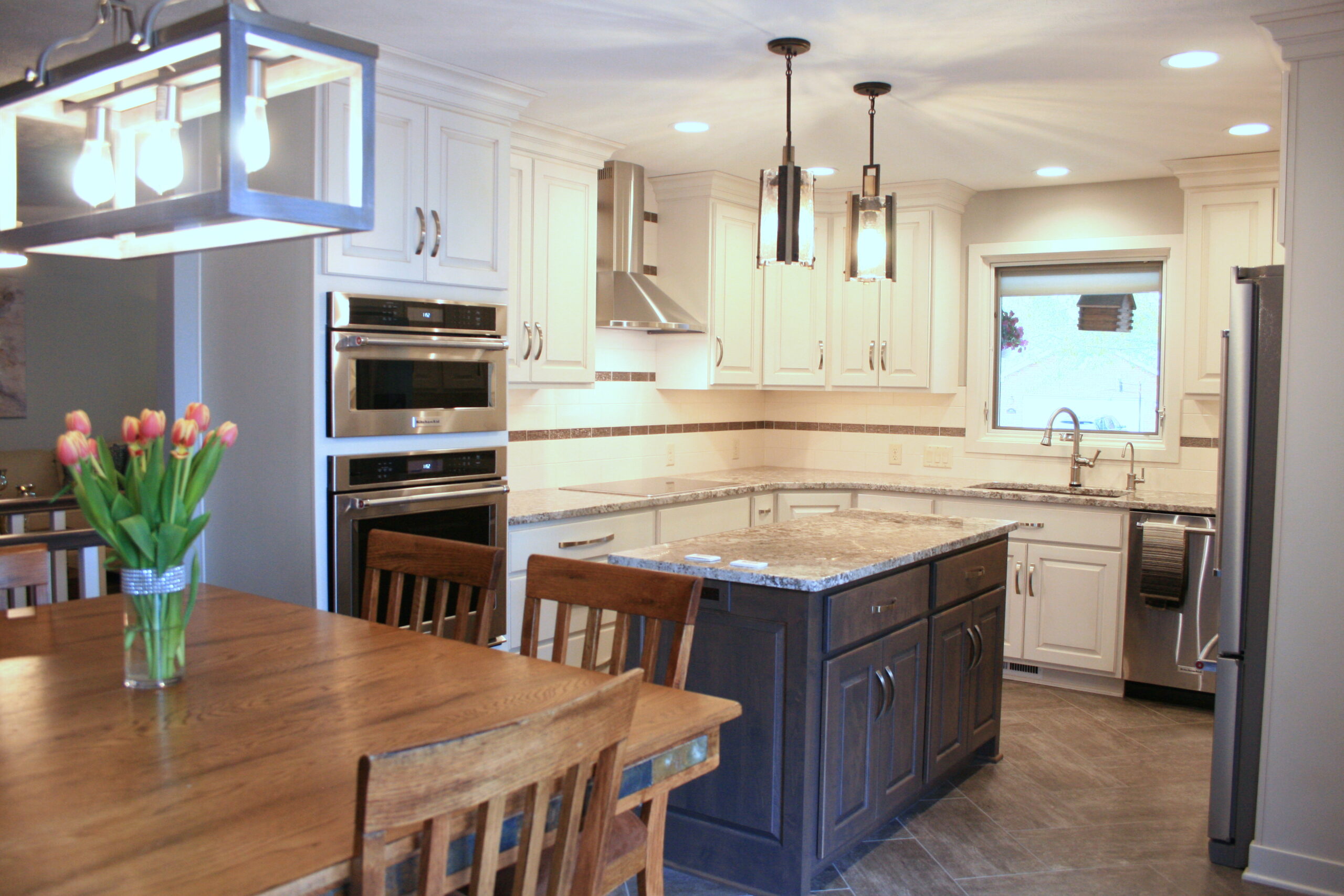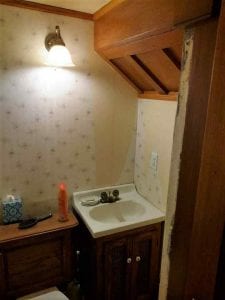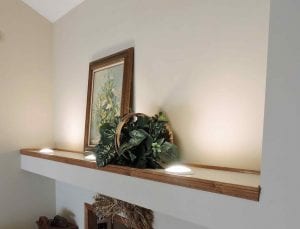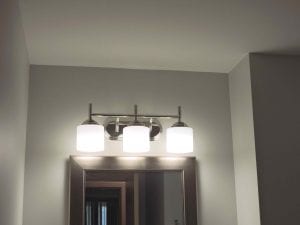Illumination Information

Lighting in the home has gone through many transformations in the past 100 years or so. The first homes built in the U.S. were only one or two rooms, and were lit by kerosene lamps or candles. Gas was used in fixtures up to WWI. With the invention of electricity, late in the 19th century and early 20th century gas was slowly replaced as the source of lighting. This was likely no more than one fixture per room, as it was quite expensive in the early years.
For the most part we probably don’t think much about the lighting in our home, until a bulb goes out. We take it for granted most of the time. There are three basic types of lighting in your home: Ambient, Task, and Accent. And light fixtures are as varied in style as they are in price. You can achieve good illumination in any room that is both functional and stylish.
Ambient lighting is the general type of lighting in any room. It can come from an overhead fixture, and also the natural light coming through the window. This is the most basic lighting in your home. Adding a mirror to a room will help add more light by reflecting the ambient lighting. Areas that don’t get a lot of use don’t need any more than the single fixture in the ceiling, say in your hallway or laundry room. Rooms with purpose often need more than that to truly function well.
Task lighting is additional lighting in a room beyond your ambient source, and used for specific tasks. Examples of task lighting would be desk lamps, appliance lights, and the pendants over your island. If you are a reader, you probably have a lamp near your favorite reading spot.
An accent light is used more to highlight something rather than for a utilitarian purpose. Accent lights can be used on artwork or anything you want illuminated, or just to add visual interest to a room. Accent lighting can also be used outdoors to focus on architectural sections of your home or decorative elements. It can also be used to gently light an area when you don’t want other lights on, like stairs, toe kicks in the bathroom, or for just enough additional light when you watch TV.
Unlike those who lived 100 years ago, we can opt to have all sorts of different light fixtures. Part of a lighting design includes the color temperature of the light. This is how the light appears coming from the bulb. It is measured in Kelvin (K) on a scale from 1,000 to 10,000. Residential lighting usually falls somewhere between 2000K and 6500k, with 27000K and 3000K the most common. The Kelvin scale starts with warmer, yellower light and progresses to cooler, bluer light. The higher the Kelvin, the brighter the light. Warmer light is more flattering to skin tones and clothing, cooler lighting provides higher contrast and is better for visual tasks.
Once upon a time, you purchased light bulbs based on wattage. Watts measure power consumption. With incandescent light, the higher the wattage, the brighter the light. Now with LED lighting there is no direct rule of thumb that correlates Wattage output. If you have a fixture that warns against using a bulb over X number of Watts, this is for heat consideration. So, an LED bulb with a 75-Watt equivalent would be safe for use in a lamp that is for a 60-Watt bulb.
Nowadays we are dealing more in Lumens when bulb shopping. Lumens measure the total light output, or brightness, of a bulb. More lumens mean more brightness. When you want to replace your bulbs, you can use this comparison:
- 100W is about 1600 lumens
- 75W is about 1100 lumens
- 60W is about 800 lumens
- 40W is about 450 lumens
You may have heard the term “Can Light”, this is a cylindrical recessed light fixture (that resembles a can) installed into a hollow opening in the ceiling. It concentrates the light in a downward direction and can have either a broad floodlight or narrow spotlight effect. They can be used to focus on specific work areas in a room, or provide light in several spots.
There are a lot of lighting options for your home, and the kitchen has more than about any other. Besides recessed or other overhead lighting, you can get under-cabinet lighting (under the upper cabinets), toe kick lighting, appliance lighting (like over your stove), ceiling lights, pendant lighting over an eating area, and above-cabinet lighting (on top of the upper cabinets).
Compared to the kitchen, the dining room requires fewer fixtures. A light over the table is the most important, and it can be as plain or as fancy as you desire. The light over the table hangs lower than most light fixtures. Since no one will be walking underneath it, it can be closer to the table. The light output shouldn’t be too bright, so those dining aren’t battling glare while they eat.
In the living room, you need enough light to carry on a conversation. It doesn’t need to be super bright. Lamps can add function so you can read or do some knitting without having to light the whole room.
A pendant light is any fixture that hangs from the ceiling by a cord, chain, or metal rod. Pendants can be used alone, or in groups. Pendant lights are often used over an eating area in a kitchen, or over the dining table. They can also be used in a bathroom, entry, or as a decorative accent elsewhere in the home.
Having adequate light in the bathroom is essential, especially over the sink. Shaving, putting on makeup, and other grooming habits require good light. Wall sconces or pendants are great options for this.
Some light fixtures can be integrated with other functions, like exhaust. Here is an exhaust fan/light combo that provides ample light in the tub/shower, and also removes unwanted steam or fumes from the room.
With the invention of dimmers, our lighting options have really increased. It’s possible to get a dimmer about anywhere in the home these days. A decorative fixture can have form AND function.
Before central air conditioning became common, the ceiling fan was used for one thing, to move air. Now it can be part of the design scheme for a room. These days it’s almost more difficult to find a fan without an integrated light, and the style possibilities are endless. The bedroom is one place fans are used, to move air and provide just enough light.
Sidebar
Let’s Talk
Request a no-hassle consultation with our team today.






































